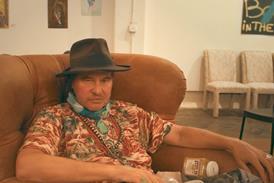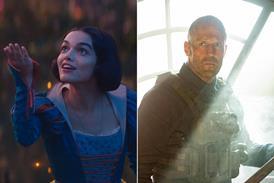While Ireland’s economy continues to suffer, its film sector remains a bright light. The Irish Film Board CEO talks about the growing ambitions of the Irish audiovisual industry.
In many ways, 2011 was a year of adjustment and recalibration for the Irish Film Board (IFB). In June seasoned media lawyer James Hickey replaced outgoing IFB CEO Simon Perry, the industry veteran who stepped down after five years in the position.
Hickey was well-placed for the role, having worked across the creative, legal and financial sectors in Ireland since graduating as a solicitor in 1977. He had offered legal services to many top productions in Ireland, including Oscar winner Once, In The Name Of The Father and John Michael McDonagh’s 2011 breakout hit The Guard.
Hickey had always admired the IFB and the possibility of working as CEO had excited him for some time. But soon after he joined the organisation, becoming the first Irish CEO since 1993, Hickey faced two major challenges.
“Timing is everything,” he says. “Last July, Irish film saw two significant events. The first was the release of The Guard. The second was the publication of the government’s Creative Capital report, which focused the creative and industrial policy for Irish audiovisual production for the coming years.”
The IFB had invested $1.3m (€1m) — the top end of its film investment — in the $6.6m (€5m)-budgeted Ireland-UK co-production The Guard, starring Brendan Gleeson and Don Cheadle, so was particularly keen to see it succeed.
‘We need to make sure Irish films are seen in Ireland, on the international stage, on more broadcast networks and online’
James Hickey, Irish Film Board
And succeed it did. The comedy-thriller became the most successful independent Irish film ever at the local box office and was third-biggest among all films in 2011. “Not every project we fund can be as successful as The Guard but we hope that film will give confidence to what is already a strong creative base in Ireland. Once audiences worldwide see those films, they will understand the creative strength we have here,” says Hickey.
Indeed, increasing distribution of Irish audiovisual content was a key recommendation in July’s Creative Capital report, which has far-reaching implications for the IFB. Among the report’s ambitions — which include doubling the turnover of the Irish audiovisual industry from $656.9m (€500m) to $1.3bn (€1bn) and doubling jobs in the sector to 10,000 in the next five years — is a more multi-faceted IFB.
“While the primary target for us is always feature films for theatrical distribution, we do have to take a more rounded view of audiovisual production, particularly dramatic production in all its manifestations. We are looking at the further development of major international TV series, for example,” says Hickey.
Fewer major TV series shot in Ireland in 2011 than the bumper 2010, which saw the likes of Camelot, Treasure Island and Neverland shooting in Ireland. But 2012 has started out on the right foot with the $28m, 12-part international co-production Titanic: Blood And Steel recently wrapping in Dublin, creating 200 local jobs and an estimated $15.8m (€12m) local spend.
One way to achieve the report’s targets will be to improve synergy between local broadcasters and the film sector.
“The relationship between films and TV broadcasters was a key factor in the Creative Capital report,” says Hickey. “I have subsequently been working closely with Noel Curran, director general of RTE [Ireland’s main public service broadcaster], to ensure they are increasingly involved in the promotion and release of films in cinemas as well as the broadcast of Irish films on Irish TV.”
The IFB is also working with the Department of Communications to speed up the creation of an Irish film channel on Saorview, the country’s first free-to-air digital TV service, which launched last year.
“The main role of the Irish Film Board is to support Irish talent,” says Hickey. “We need to make sure Irish films are seen in Ireland, on the international stage, on more broadcast networks and online.”
Film production funding remains the cornerstone of the IFB’s work. Despite a 14.9% budget reduction in 2012 — from $21.1m (€16m) to $17.4m (€13.2m) — the IFB continues to invest in productions with global appeal. In the latest round of production funding last November, Neil Jordan’s Byzantium starring Gemma Arterton and Saoirse Ronan received an allocation of $1.4m (€1.1m). Rob and Ronan Burke’s Standby and Steph Green’s Run & Jump both received $790,000 (€600,000) while Jim Sheridan received the top development backing of $65,800 (€50,000) for Into The West, a re-imagining of his 1992 film of the same name.
‘Punch above our weight’
The prospects for the industry in 2012 are positive despite economic austerity. Last year a record 20 Irish films were released in Irish cinemas. The industry was also cheered by the extension of the popular Section 481 tax-relief scheme to 2015 and Ireland renewed its commitment to Eurimages. The government also formalised a co-production treaty with Luxembourg, which assisted Fastnet Films’ co-production Love Eternal and could help to move along Brendan Gleeson’s long-gestating buzz project At Swim Two Birds.
“We continue to punch above our weight in terms of international co-productions,” notes Hickey. “Simon Perry did a huge amount to develop Ireland’s co-production potential and I look forward to developing that. We’re very hopeful At Swim will go this year. I’m working closely with [producer] Alan Moloney on the film and I’m looking at at least two other projects at that kind of level.”
Ireland also remains a popular shooting destination. Ek Tha Tiger, the first Bollywood blockbuster to shoot in Ireland, is in production at various locations around Dublin with an Irish spend of $2.6m (€2m).
And Irish productions continue to have a healthy presence at global festivals with UK-Ireland co-production Grabbers recently premiering at Sundance and Kirsten Sheridan’s Dollhouse selected for Berlin’s Panorama.
Above all, the local talent base remains potent, says Hickey: “We have strong writers, directors and actors and an abundance of strong projects. We need to let that creativity flower. Our job is to provide the financial context and focus for that creativity while at the same time feeding and growing the audience for that creativity.”
Ireland in numbers
- The audiovisual content production sector in Ireland is estimated to be worth more than $724.7m (€550m) and employs more than 6,000 people.
- From 1993-2011, the Irish Film Board invested $155.4m (€118m) in major film, TV and animation projects, worth a combined value of more than $1.3bn (€1bn).
- These projects have attracted more than $886.2m (€673m) in international project investment. For every $1.30 (€1) the IFB invested in a project, almost $8 (€6) was attracted from international sources.
- Of this $886.2m in international investment, the UK accounts for 38%, US/rest of world 40% and other European Union countries 22%.
- Over the last five years, the IFB has invested $73.7m (€56m) in film, TV and animation projects which has generated a local spend of some $288.3m (€219m) on Irish labour, goods and services.
James Hickey
- Graduated as a solicitor from Trinity College Dublin in 1977.
- After brief stints at the Dublin Theatre Festival and Dublin’s project Arts Centre, he started representing professionals in the music and film industries in the 1980s.
- In 1992, one year after joining law firm Matheson Ormsby Prentice, Hickey served on the government committee that recommended the reconstitution of the IFB six years after its controversial abolition.
- Chair of the Abbey Theatre for a period during the 1990s.
- While rising to chairman at Matheson Ormsby Prentice, Hickey continued to work closely on local production contracts.
- Took his position as head of the IFB in June 2011.






















No comments yet